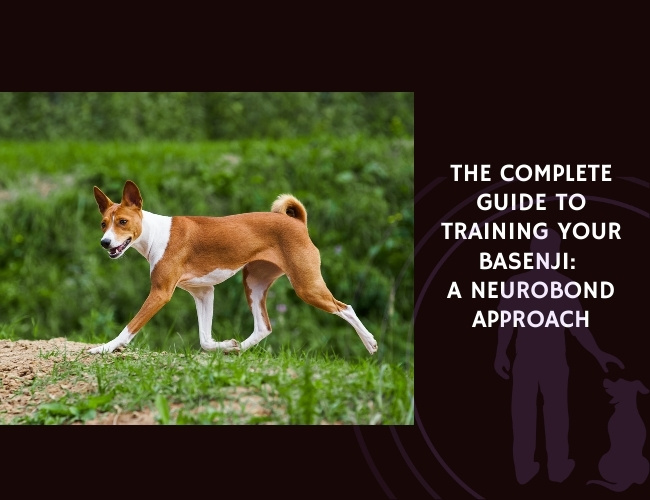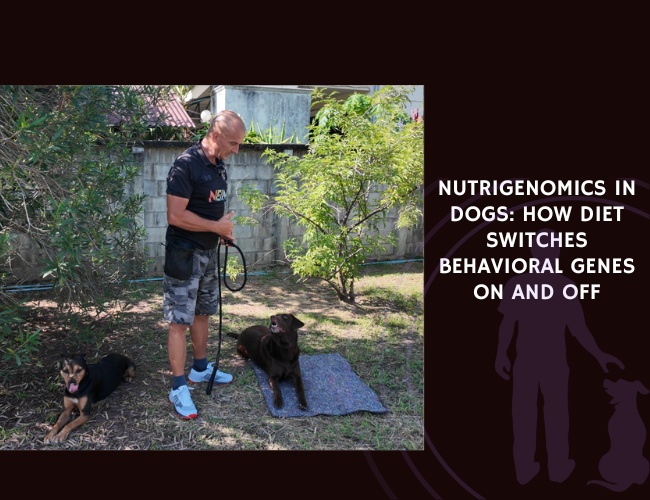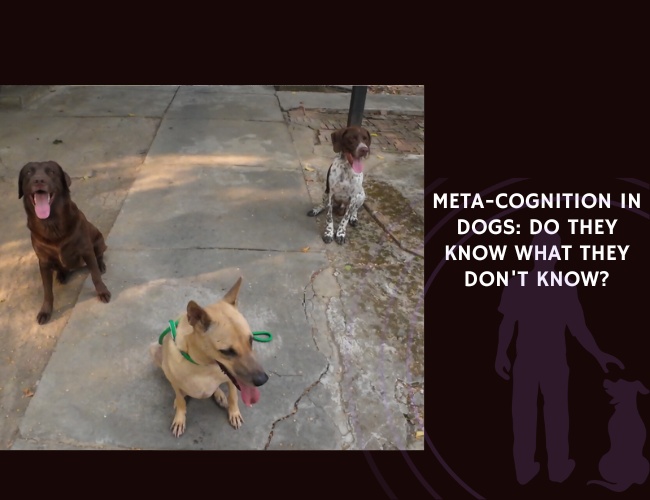Introduction
The American Bulldog stands as a testament to the enduring bond between humans and their canine companions. This powerful, athletic breed emerged from the crucible of American agricultural life, where farmers needed a versatile working dog capable of handling everything from livestock management to property protection. Today, these muscular yet gentle giants have transitioned from farm fields to family rooms, bringing with them an unwavering loyalty and a heart that seems too big for even their substantial frame.
Did you know that the American Bulldog nearly vanished forever? Following World War II, the breed teetered on the brink of extinction until two dedicated men, John D. Johnson and Alan Scott, embarked on a mission to save these remarkable dogs. Their efforts gave rise to two distinct lines that continue to shape the breed today – the stockier Johnson type and the more athletic Scott type. This rich heritage has created a dog that combines strength with sensitivity, courage with companionship, and determination with devotion.
As we explore the world of American Bulldogs, you’ll discover a breed that defies simple categorization. These dogs possess the power to excel in protection work, the intelligence to master complex training, and the gentleness to become cherished family members. Let us guide you through understanding these remarkable companions, from their unique behavioral traits to their specific care requirements 🐾
Character & Behaviour
Understanding Your American Bulldog’s Temperament
The American Bulldog’s character is a fascinating blend of strength and sensitivity. These dogs carry themselves with a confident air that immediately commands respect, yet beneath that powerful exterior beats the heart of a devoted companion. They are known for their loyalty, protective nature, and prepared to protect their owners whenever necessary. On the other hand, they’re very affectionate and never display hostility or aggression towards their family or people they trust.
Protective Instincts and Social Discrimination Your American Bulldog possesses an innate ability to distinguish between friend and potential threat. This discernment isn’t aggressive paranoia – it’s an intelligent assessment of situations. They observe body language, vocal tones, and your reactions to determine appropriate responses. This protective nature means they’ll position themselves between you and perceived dangers, often without any dramatic display.
The Family Dynamic Within the family unit, American Bulldogs transform into gentle giants. The American bulldog temperament is quite silly when excited or happy, and these dogs will clown around to make their human companions laugh. They form particularly strong bonds with children, though their size and enthusiasm require supervised interactions with younger family members.
Behavioral Tendencies and Daily Life
Energy Levels and Activity Patterns Despite their muscular build suggesting constant high energy, American Bulldogs actually display a balanced activity pattern. They experience bursts of playful energy – often called “zoomies” – followed by contentment with calm companionship. This makes them surprisingly adaptable to various living situations, provided their exercise needs are met.
Social Behavior with Other Animals American Bulldogs can get along with other dogs – and some enjoy the company of a cat too – but only if they’ve been extensively socialised and well trained from a young age. Their protective nature can manifest as territorial behavior, particularly with same-sex dogs. Early socialization proves crucial in developing appropriate inter-dog relationships.
Independence vs. Attachment American Bulldogs display an interesting paradox – they’re independent thinkers yet deeply attached to their families. American Bulldogs need ample socialization in the socialization period from 8 to 16 weeks to become well-adjusted adult dogs. They don’t appreciate being left alone for extended periods and may develop separation anxiety or destructive behaviors without proper training and gradual conditioning.
Vocalization & Communication
Understanding How Your American Bulldog “Talks”
American Bulldogs aren’t typically excessive barkers, but they’re certainly not silent companions. Their communication style reflects their working heritage – purposeful and meaningful rather than constant chatter.
The Vocabulary of Sounds Your American Bulldog employs a surprising range of vocalizations:
- Alert barking: Deep, resonant barks that mean business
- Excitement whines: High-pitched sounds during play or greeting
- Contentment grumbles: Low rumbles when settling for cuddles
- Frustration groans: Dramatic sighs when things don’t go their way
Body Language Speaks Volumes Watch for these physical communication cues:
- The wiggle walk: Full-body wagging indicates pure joy
- The lean: Pressing against you shows affection and trust
- The stare: Intense eye contact often precedes a request
- The play bow: Front end down, rear up means “let’s have fun!”
Responding to Your Communication American Bulldogs are remarkably attuned to human emotions and vocal tones. They’ll often mirror your energy level and respond more to how you say something than what you’re saying. This emotional intelligence makes them excellent therapy and emotional support candidates.
Training & Education
Building a Strong Foundation Through Positive Methods
Training an American Bulldog requires understanding their unique mindset. American Bulldogs are very trainable when you speak their language, which is lots of treats and positive reinforcement. They pick up on basic commands easily and have a natural eagerness to please, even if they can push boundaries sometimes.
Early Puppy Training (8-16 weeks) The socialization window during this period shapes your dog’s entire future. Start training your pup with basic commands like “Sit,” “Stay,” and “Leave-It.” Then move on to commands like “Drop-It.” Bulldogs have a strong grip once they bite down on toys, so it’s imperative that they learn the “Drop It” command.
Essential early training elements:
- Name recognition: Use happy tones and rewards
- Bite inhibition: Redirect to appropriate toys
- House training: Consistency is key with scheduled potty breaks
- Crate training: Create a positive den environment
Adolescent Challenges (4-18 months) This period tests your patience as hormones surge and boundaries get pushed. Young American Bulldogs tend to have short attention spans. A very effective method for teaching is to keep your lessons short. A series of 10-15 minute training sessions over the course of an hour or two with breaks in between is going to prove much more effective than longer training sessions.
Advanced Training Opportunities American Bulldogs excel in various activities:
- Weight pulling: Channels their strength constructively
- Agility: Builds confidence despite their bulk
- Obedience trials: Showcases their intelligence
- Protection sports: Utilizes natural guarding instincts appropriately
Overcoming Training Challenges
The Stubborn Streak When your American Bulldog plants those feet and refuses to budge, remember you’re dealing with an independent thinker, not a defiant rebel. They often pause to process requests, especially if they don’t see the point. Making training fun and rewarding transforms stubborn moments into thinking opportunities.
Motivation and Rewards Food motivation typically runs high in American Bulldogs, but variety prevents boredom:
- High-value treats for new behaviors
- Praise and physical affection for maintenance
- Play rewards for energetic tasks
- Life rewards (walks, car rides) for everyday compliance

Nutritional Recommendations
Fueling Your American Bulldog’s Active Lifestyle
The nutritional needs of American Bulldogs reflect their muscular build and varying activity levels. Because American Bulldogs are muscular and very active, they require food that is rich in meat protein and omega-3 fatty acids but low in carbohydrates in order to prevent weight gain. Adult Bulldogs should also be given muscle and joint supplements to support their substantial frame.
Protein Power for Muscle Maintenance Your American Bulldog’s impressive physique demands quality protein. Adult dogs need a minimum of 18% protein, though active bulldogs thrive on 22-28% from named meat sources like chicken, beef, lamb, or fish. This higher protein content supports muscle maintenance and provides sustained energy for their active lifestyle.
Smart Feeding Strategies American Bulldogs typically need 1,500-2,000 calories daily, divided into two meals to prevent bloat and maintain steady energy. A good rule of thumb is to feed an adult American Bulldog 2 times a day to fuel them for all their activities. Morning and evening feedings work best, with consistent timing supporting healthy digestion.
Essential Supplements for Joint Health Given their predisposition to hip and elbow dysplasia, joint supplementation proves crucial:
- Glucosamine and chondroitin for cartilage support
- Omega-3 fatty acids for anti-inflammatory benefits
- MSM for additional joint comfort
- Quality fish oil supporting both joint and coat health
These supplements become particularly important as your bulldog ages, helping maintain mobility and comfort throughout their life.
Life Stage Nutrition Requirements
Puppy Stage (0-18 months) Growing American Bulldogs need carefully balanced nutrition to support proper development without encouraging too-rapid growth that can stress developing joints. Feed an American Bulldog puppy large-breed puppy food for their first 14 months to support slow but consistent growth. Skip food or supplements with calcium—which could cause the bones of these bigger dogs to develop too quickly—until your pooch is fully grown.
Adult Maintenance (18 months – 7 years) Adult American Bulldogs typically thrive on:
- Protein content: 22-28% from quality meat sources
- Fat content: 12-16% for energy and coat health
- Portion control: 2-3 cups daily, divided into two meals
- Caloric needs: 1,500-2,000 calories depending on activity level
Senior Nutrition (7+ years) As metabolism slows and activity decreases:
- Reduce calories by 20-30% to prevent obesity
- Increase joint-supporting supplements
- Consider easier-to-digest protein sources
- Monitor weight weekly to adjust portions
Special Dietary Considerations
Joint and Skeletal Support Given their predisposition to hip and elbow dysplasia, nutritional support for joint health proves crucial:
- Glucosamine and chondroitin: Daily supplementation
- Omega-3 fatty acids: Anti-inflammatory benefits
- Vitamin C: Collagen production support
- Controlled calcium: Prevents developmental issues in puppies
Managing Food Sensitivities American Bulldogs can be prone to skin allergies, which can manifest as itchy, red, or flaky skin. Common triggers include certain foods, pollen, and dust mites. Common food sensitivities include:
- Chicken and poultry products
- Grain sensitivities (though true allergies are rare)
- Artificial additives and preservatives
- Dairy products in some individuals
Weight Management Strategies Maintaining optimal weight prevents numerous health issues:
- Use measured portions rather than free-feeding
- Limit treats to 10% of daily calories
- Choose low-calorie vegetables as treat alternatives
- Regular weigh-ins to catch weight gain early
Bold. Loyal. Unshakeable.
Power wrapped in affection.
The American Bulldog may look imposing, but behind that square jaw lies a soul full of devotion. These dogs are guardians not out of aggression, but out of love. Their courage isn’t just physical—it’s emotional. They anchor their families, stand tall when needed, and melt into softness when the moment calls for connection. It’s this duality—of strength and silliness—that defines them.
Loyalty that sets boundaries.
With a keen eye for intention, the American Bulldog discerns who belongs and who doesn’t. They don’t bark at every sound—they assess, evaluate, decide. This social intelligence isn’t just instinct; it’s part of the bond they form with you. They’re not here to impress strangers—they’re here to protect home. Not every dog thinks like that. But the American Bulldog does.
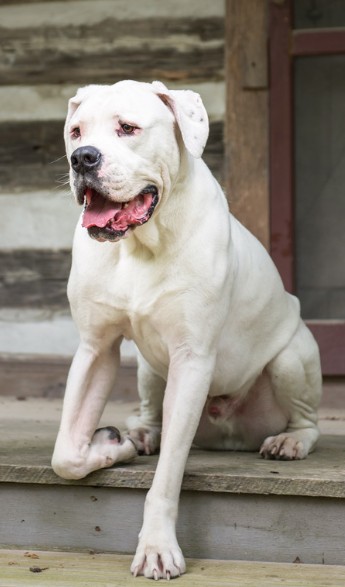
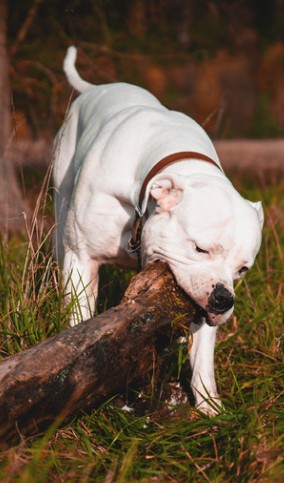
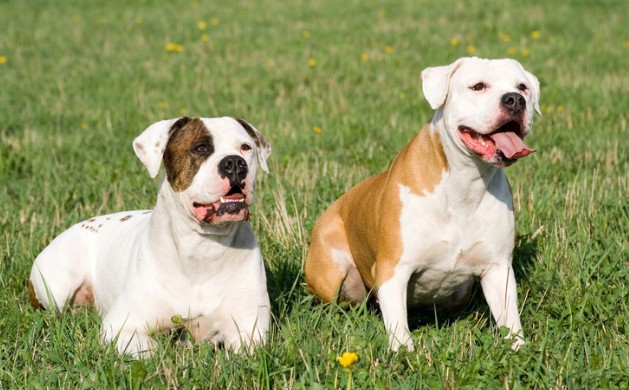
Unshakeable hearts need steady hands.
They demand more than casual care. They need structure, understanding, and leadership with a calm, firm hand. When raised right, they thrive—not just physically, but emotionally. When neglected, their power turns restless. But when nurtured? You’ll witness a dog so grounded, so in tune, it’s like living with a protector carved from stone—and softened by loyalty. 🧡
Health Concerns
Understanding American Bulldog Health Challenges
While American Bulldogs are generally robust dogs, awareness of breed-specific health concerns enables proactive care. American Bulldogs generally have a lifespan of about 10 to 14 years. Their longevity can be influenced by factors like genetics, diet, exercise, and overall care.
Hip and Elbow Dysplasia Hip Dysplasia is a common health issue in American Bulldogs, characterized by a malformation of the hip joint. This condition can cause pain and mobility problems due to the joint not fitting properly into the hip socket. 10-20% of American Bulldogs are affected by Hip Dysplasia.
Recognition signs include:
- Bunny-hopping gait when running
- Difficulty rising from rest
- Reluctance to climb stairs or jump
- Decreased activity or play
Management strategies:
- Maintain healthy weight throughout life
- Provide joint supplements from young age
- Low-impact exercise like swimming
- Physical therapy for affected dogs
- Surgical options in severe cases
Respiratory Considerations About 25-30% of American Bulldogs are affected by Brachycephalic Obstructive Airway Syndrome (BOAS) due to their short snouts. This leads to breathing difficulties, especially in hot or humid weather.
While not as severely affected as English Bulldogs, American Bulldogs can experience:
- Exercise intolerance in heat
- Noisy breathing during sleep
- Excessive panting after minimal exertion
Preventive measures:
- Exercise during cooler parts of day
- Maintain ideal body weight
- Use harnesses instead of collars
- Keep stress levels low
- Provide cooling mats in summer
Skin and Allergy Issues The breed’s sensitive skin requires attention:
- Regular inspection for hot spots
- Hypoallergenic shampoos for bathing
- Monitoring for food allergy symptoms
- Environmental allergen management
- Prompt treatment of skin infections
Neurological Concerns Neuronal Ceroid Lipofuscinosis, shortened to NCL, is a progressive neurologic disease found in several breeds, including your American Bulldog. While rare, genetic testing can identify carriers.
Cardiac Health Regular cardiac screening helps identify issues early:
- Annual veterinary auscultation
- Echocardiogram for breeding dogs
- Monitor for exercise intolerance
- Watch for coughing or fatigue

Lifestyle & Environment
Creating the Ideal Living Situation
American Bulldogs adapt remarkably well to various living situations when their needs are met. These big, powerful dogs are not for the novice owner, with effective training playing an essential role in making sure they are safe, happy companions.
Space Requirements While a yard provides obvious benefits, apartment living is possible with commitment:
- Daily extended exercise sessions
- Mental stimulation through training and puzzles
- Regular socialization opportunities
- Designated indoor play space
Climate Considerations Their short coat and facial structure create specific needs:
- Hot weather: Limit outdoor time, provide cooling options
- Cold weather: Short exposure times, consider protective clothing
- Humidity: Monitor breathing, avoid strenuous activity
- Indoor climate: Maintain moderate temperatures year-round
Family Integration They’re better suited to households with older children or teens that know how to behave appropriately around dogs. Great care should also be taken when introducing dogs and children, making sure to never leave little ones unsupervised no matter how well trained your pooch is.
Family success factors:
- Clear household rules everyone follows
- Designated dog-free zones if needed
- Children trained in appropriate interaction
- Supervision with visiting children
- Respect for the dog’s space and resources
Exercise and Enrichment Strategies
Physical Exercise Needs Full-grown American Bulldogs need 1–2 hours of exercise each day, mixing energetic walks, off-lead running in secure areas, and plenty of interactive games.
Weekly exercise plan example:
- Monday/Wednesday/Friday: 45-minute walks plus training
- Tuesday/Thursday: Swimming or fetch sessions
- Weekend: Hiking or extended play dates
- Daily: Short potty walks and indoor play
Mental Stimulation Requirements Intelligent American Bulldogs need brain work:
- Puzzle feeders for meals
- Hide-and-seek games
- New tricks and commands
- Scent work activities
- Rotating toy selection
Social Enrichment Regular social experiences prevent isolation issues:
- Supervised dog park visits
- Structured play dates
- Training classes
- Public outings
- Visitor interactions at home
Senior Care
Supporting Your Aging American Bulldog
As American Bulldogs enter their golden years around age 7, their needs evolve. Understanding these changes ensures continued quality of life through their senior years.
Physical Changes and Adaptations Senior American Bulldogs often experience:
- Decreased mobility from arthritis
- Reduced energy levels
- Weight gain from slower metabolism
- Cloudy eyes or hearing loss
- Increased sleeping needs
Home modifications for senior comfort:
- Orthopedic bedding in multiple locations
- Non-slip rugs on smooth floors
- Raised food and water bowls
- Ramps for car or furniture access
- Night lights for vision support
Health Monitoring Intensifies Bi-annual veterinary visits become crucial for:
- Blood work to catch issues early
- Dental health assessment
- Joint evaluation and pain management
- Weight and body condition scoring
- Cognitive function assessment
Nutritional Adjustments Senior dietary needs include:
- Reduced calories to prevent obesity
- Increased fiber for digestive health
- Joint support supplementation
- Possible protein reduction for kidney health
- Smaller, more frequent meals
Quality of Life Considerations Maintaining joy in senior years:
- Gentle exercise tailored to ability
- Mental stimulation through simple games
- Increased affection and attention
- Comfortable routine maintenance
- Pain management when needed
The bond with a senior American Bulldog deepens with shared quiet moments and gentle care. These dogs who once bounded with endless energy find contentment in simply being near their beloved humans 🧡
Conclusion: Is the American Bulldog Right for You?
Choosing to share your life with an American Bulldog means embracing both tremendous rewards and significant responsibilities. These powerful, intelligent dogs offer unwavering loyalty, protective instincts, and surprising gentleness to those who earn their trust and respect.
You might be an ideal American Bulldog owner if you:
- Have experience with strong, independent breeds
- Commit to consistent, positive training
- Provide adequate daily exercise and mental stimulation
- Appreciate a protective but discerning guardian
- Want a devoted family companion
- Can handle potential health management
- Have the space and time for a large, active dog
Consider another breed if you:
- Prefer a dog that’s immediately friendly with everyone
- Want minimal training requirements
- Have very young children without dog experience
- Travel frequently or work long hours
- Seek a low-maintenance pet
- Cannot commit to potential health expenses
- Live in areas with breed-specific legislation
The American Bulldog journey rewards those who approach it with knowledge, preparation, and dedication. These remarkable dogs transform from powerful working animals into gentle family guardians when given proper guidance, care, and love. Their strength becomes your security, their intelligence your entertainment, and their loyalty your constant companion.
As you consider welcoming an American Bulldog into your life, remember that you’re not just getting a pet – you’re gaining a family member who will share your joys, guard your home, and fill your days with both laughter and love. The question isn’t whether an American Bulldog can fit into your life, but whether you’re ready for the profound bond these extraordinary dogs create with their chosen families.
Next, we encourage you to connect with reputable breeders or rescue organizations, meet American Bulldogs in person, and continue learning about these magnificent companions. Your perfect four-legged friend may be waiting to begin a lifetime adventure with you 🐾




